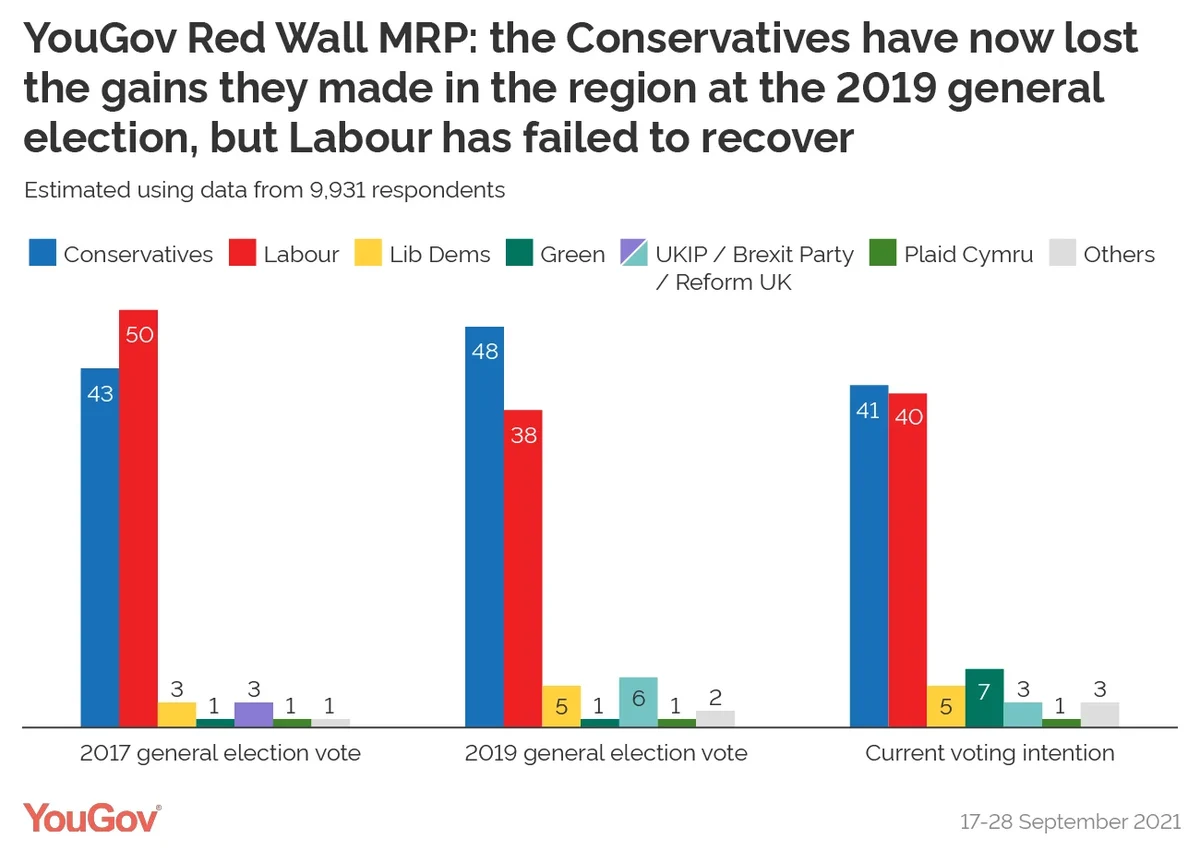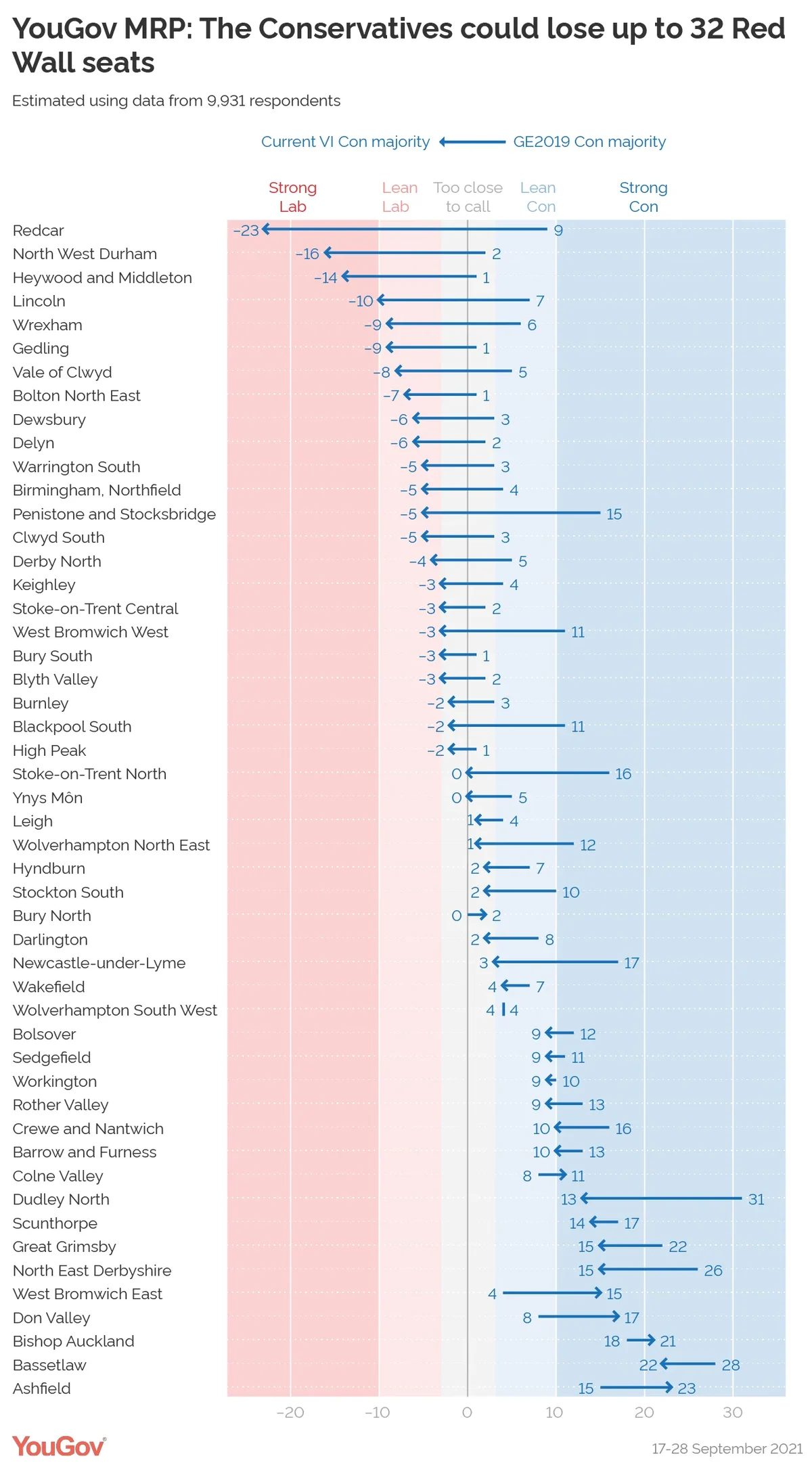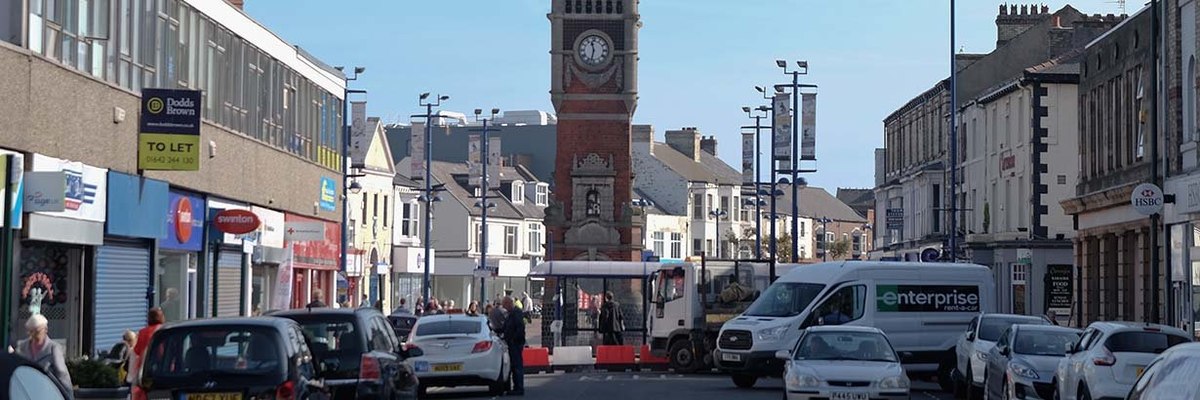Ahead of the Conservative party conference, YouGov polling data shows a definite mixed bag for Boris Johnson and his government. Despite ongoing domestic policy crises, the Conservatives still lead in voting intention, with Labour unable to cut through and fully catch up.
However, the Conservative lead is certainly slender and fragile – as a brief Labour lead in the polls two weeks ago after the National Insurance tax rise announcement showed.
Last week, we revealed that the Conservatives would be set to lose 12 Blue Wall and 17 Red Wall constituencies to Labour, if an election were held tomorrow. Labour were catching them up in terms of vote intention, but the Conservatives still enjoyed a healthy lead in both areas.
Now, however, YouGov data shows the Conservatives and Labour neck and neck in the so called ‘Red Wall’ of pivotal Northern, Midlands, and North Wales constituencies. A multilevel regression and post-stratification (MRP) model of constituency vote intention shows that the Conservatives could be set to lose up to 32 Red Wall seats to Labour, if an election were held tomorrow.
According to our MRP model, estimated using almost 10,000 respondents, the Conservatives have now dropped to 41% in Red Wall vote intention. That’s seven points down on 2019, and two points below their 2017 showing under Theresa May.

Labour, meanwhile, have gone up two points, from 38% in 2019 to 40% now, just one point behind Johnson’s party. While this is somewhat encouraging news for Keir Starmer, it still represents a 10-point drop for them on their 2017 result.
According to our latest data, if an election were to be held tomorrow, four Red Wall Conservative constituencies would be firmly back in Labour’s hands (including Redcar, North West Durham, and Heywood and Middleton). Another 14 (including Stoke-on-Trent Central, Bolton North East, and Wrexham) would also be likely to fall, and a further 14 (including Darlington, Blyth Valley, and Leigh) are too close to call.
The Conservatives still hold on strongly to 10 of their 2019 election seizures in the region (including Don Valley, Bishop Auckland, and Dudley North), with a slightly weaker hold over a further nine seats that they would nonetheless still be likely to keep (including Wakefield, Bolsover, and Workington).

Wider woes
The British public are becoming increasingly dissatisfied with the government’s performance – including on key issues such as inflation – and are beginning to lose faith in Johnson as a leader.
A majority of the public now disapprove of the government’s record to date, with the latest figures indicating 54% disapproval versus 26% approval. Furthermore, as prices continue to rise, supply chain issues worsen, and the fuel crisis hits, a majority of the public now also think that the government is handling inflation (54%) and the economy (55%) badly (versus 26% and 33% respectively who believe they are managing them well).
Boris Johnson’s personal ratings have taken a serious hit too, with 60% now thinking he is doing badly as Prime Minister (vs 35% well), and 41% of the public believing he should stand down as leader of the Conservative party (36% believe he should remain).
What will make this most uncomfortable for Prime Minister are the figures among 2019 Conservative voters. As of now, over a quarter (27%) believe he is doing a bad job, and almost one-in-five (18%) think he should resign (on the other hand, 69% think he is doing well, and the same figure believe he should remain in post).
Methodology
The MRP model was fitted using data collected from around 10,000 respondents between 17-28 September 2021. MRP constituency forecast models first estimate the relationship between a wide variety of characteristics about prospective voters and their vote intention (this is the ‘multilevel model’ part). It then uses data at the constituency level to predict the outcomes of seats based on the concentration of various different types of voters who live there, according to what the multilevel model says about their probability of voting for various parties (‘post-stratification’). In this instance, 2500 draws from the posterior distribution of the multilevel model were used to predict the constituency probabilities. The original model was ran with 12,000 iterations. Turnout likelihood for each voter group was estimated using a multilevel model on British Election Study data. The precise multilevel model equation has been benchmarked to correctly estimate the 2019 General Election to within a couple of seats of each party’s actual performance in that election.










